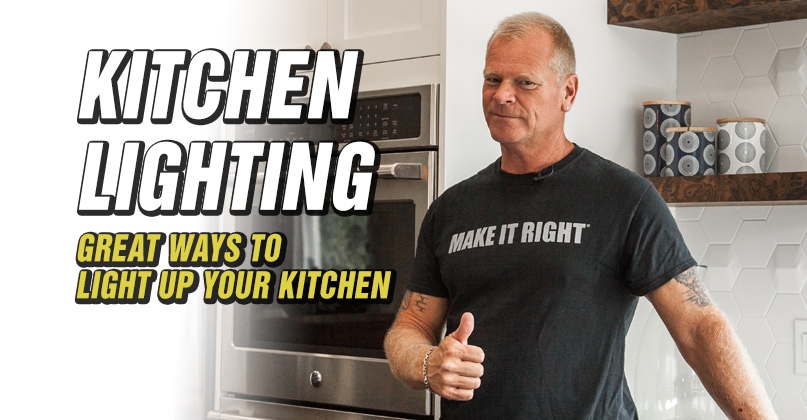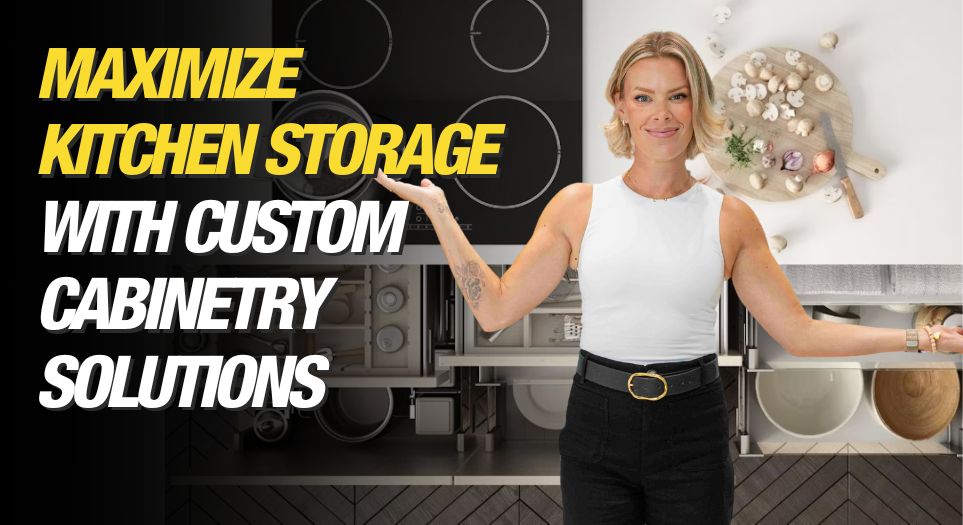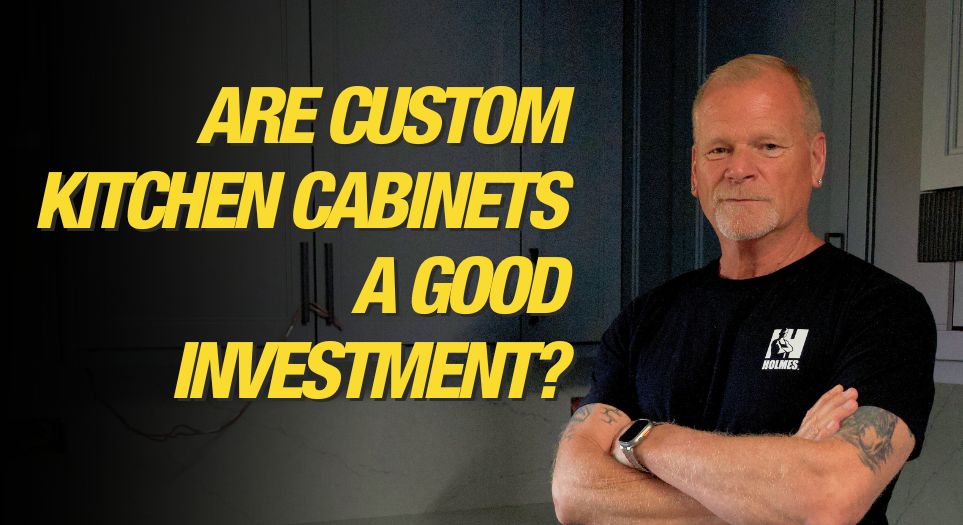When it comes to homes, water is enemy number one, and these 3 exterior home maintenance tasks will help prevent water damage. Water damage is one of the most costly...
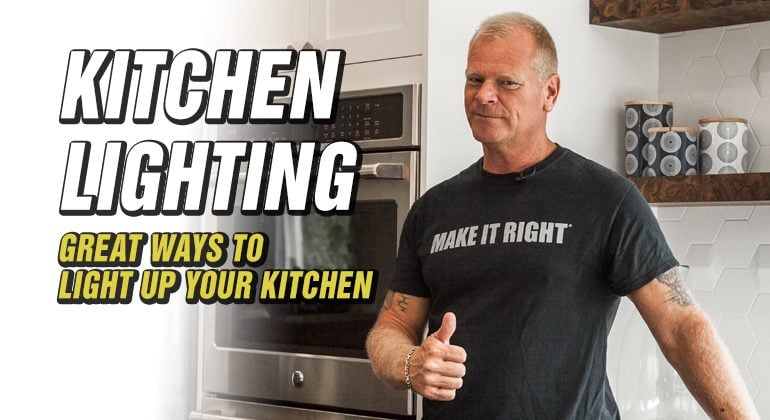
Ways to Light Your Kitchen
By Mike Holmes
Mike’s Advice / Kitchen Renovation
Thursday, December 2nd, 2021 @ 9:09am
LIGHTING IDEAS FOR YOUR KITCHEN
Most kitchens today are large open spaces that serve a multi-functional purpose. The kitchen is often the heart of the home, where the family eats, prepares meals, and even does homework. So, today’s kitchens require different types of kitchen lighting for each area. So what should you consider when choosing lights? I am going to explain different ways to light your kitchen.
There are three general types of lighting you should consider. Ambient light should be your overall source of light for the room. Task lighting is more concentrated for a specific area and activity, like food prep, or reading recipes. Accent lighting is for illuminating a focal point, architectural feature, or object in the room.
RELATED:
Kitchen Island or Dining Area Lighting
The best way to light a task-oriented peninsula or island used for food prep, cooking and recipe reading, is a mixture of recessed and hanging lights. However, when the island is just for eating, pendants or mini-pendants will be fine. Pendant lights should be at least 30-32” apart, and 30-36” above the island evenly centered.
For example, an 8’ island should have 3-small or medium pendants, while a 12’ island could have 5-small or medium pendants or 3-large pendants. Chandelier lighting can also is a good option for an in-kitchen dining area or island, and linear suspension lighting works great for rooms with very high ceilings, but make sure you have at least 40” above the counter.

Photo from Holmes Approved Homes builder Gibraltar Fine Homes
RELATED:
Under Cabinet Lighting For Your Kitchen
Under-cabinet lighting provides the extra lighting needed for countertop activities like preparing meals, reading recipes, and general navigation. Strip lighting, (tape or ribbon lighting) puck or light bar lighting, are great options for this area. Strip lights have a low profile size; they are flexible and easy to install with self-adhesive options. They provide a consistent light beam and are also great for cabinet interiors as well as toe-kick lighting.
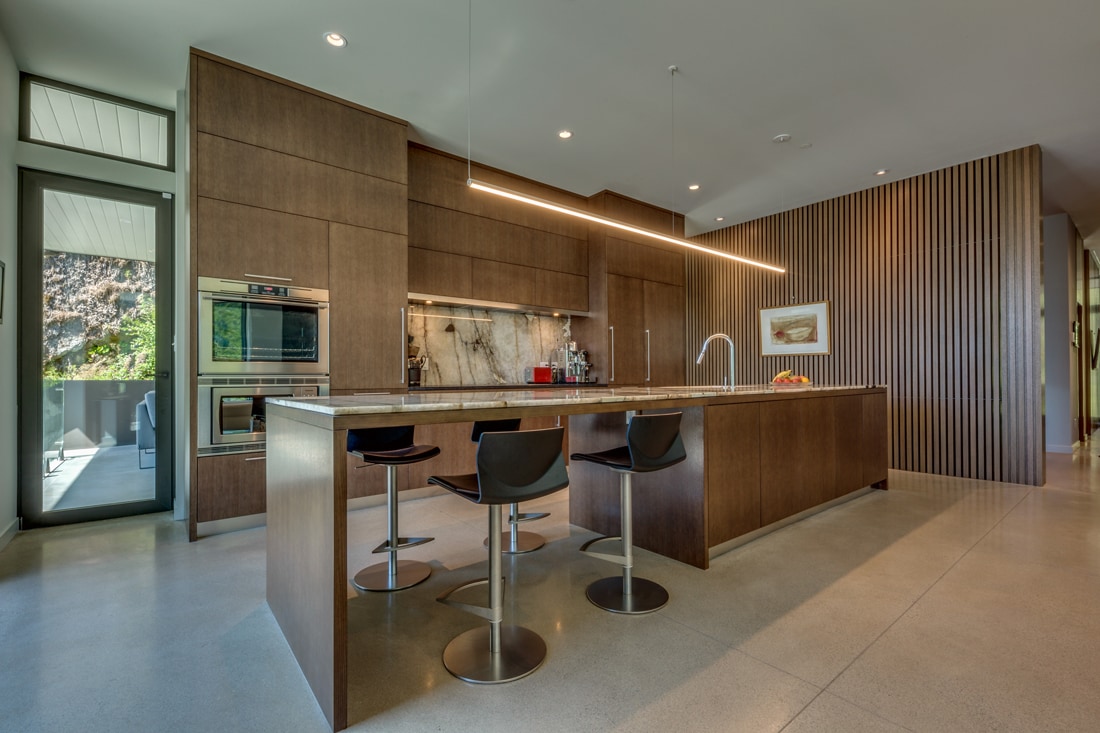
Photo provided by Holmes Approved Homes builder RDC Fine Homes
Also, remember strip density refers to the brightness. Meaning high density is brighter than standard and comes in white light and colored light. Puck lighting is another good option for illuminating countertops. They come in a variety of styles and dimmable options, but the lighting will be concentrated compared to the strip lighting and may cause shadows.
All-Purpose Ambient Lighting In Your Kitchen
Pendant, recessed (pot lights), track, chandelier, and flush-mount lighting are all excellent options for creating all-purpose or ambient lighting in your kitchen.
These lights create a clear ceiling line as the casing is inside the ceiling with no obstructions – it’s the right choice with bulkheads or low-ceiling rooms. Recessed lights around to the perimeter of the kitchen are a great way to define the space. They can also be used for task lighting, as they are directional; however, you will need a large amount of them to cover a room.

Kitchen renovation completed for Holmes on Homes Building A Legacy
Track lighting is considered dated by some, but nowadays track comes in some pretty funky designs and can be used to illuminate corners and work areas in kitchens. Track lighting is flexible, too, as you can customize the position of the heads and direction to create accent lighting for your counters, appliances, or a wall feature or artwork.
Flush-mount lighting is another good option for a kitchen, but you may need several fixtures to provide sufficient light, depending on the space. Flush mounts are usually mounted flush or close to the ceiling. However, there are styles similar to chandeliers, which are also a good option for over an in-kitchen area or breakfast island.
READ NEXT:
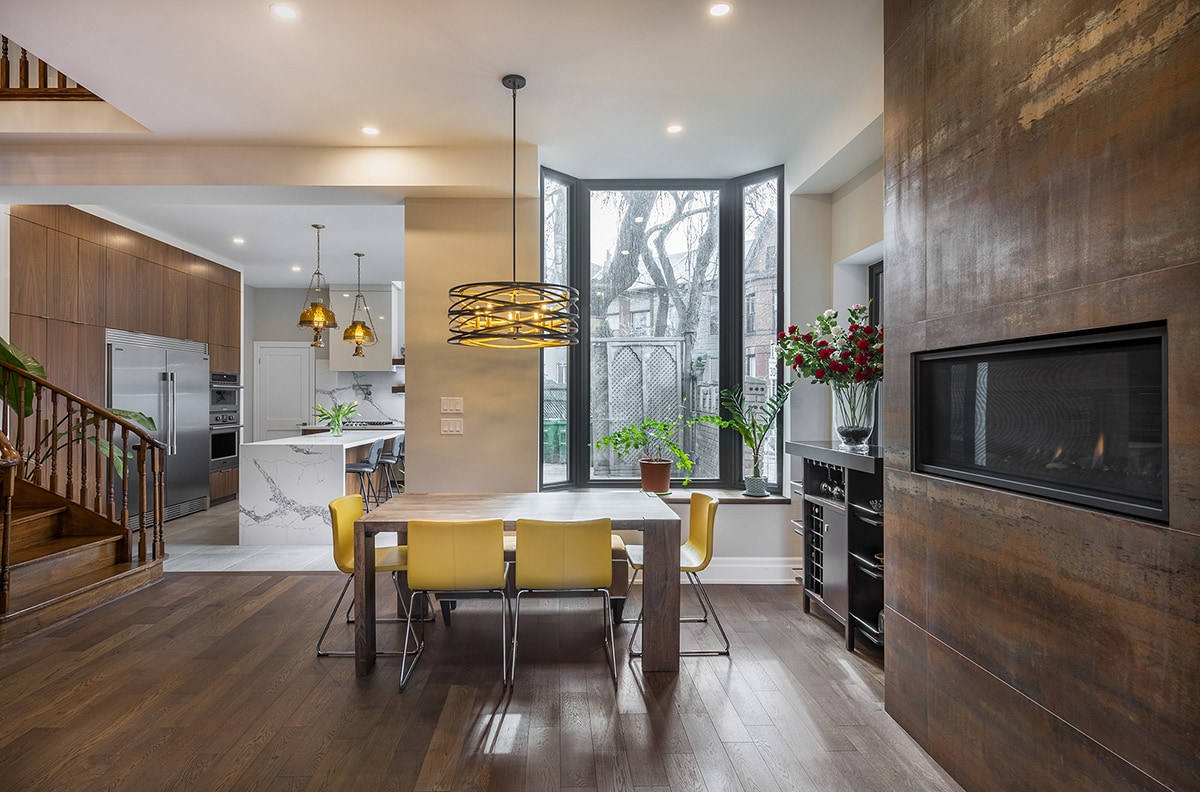
Featuring Holmes Approved Renovator Sosna Inc.
RELATED:
Light Quality and Bulbs
The quality of your light should also be considered when lighting a kitchen. It will affect the overall ambiance of the space. For several years now, manufacturers have been phasing out the traditional 75- and 100-watt incandescent bulbs and replacing them with compact fluorescents (CFLs), halogen or LEDs (light-emitting diodes). So, what types work best?
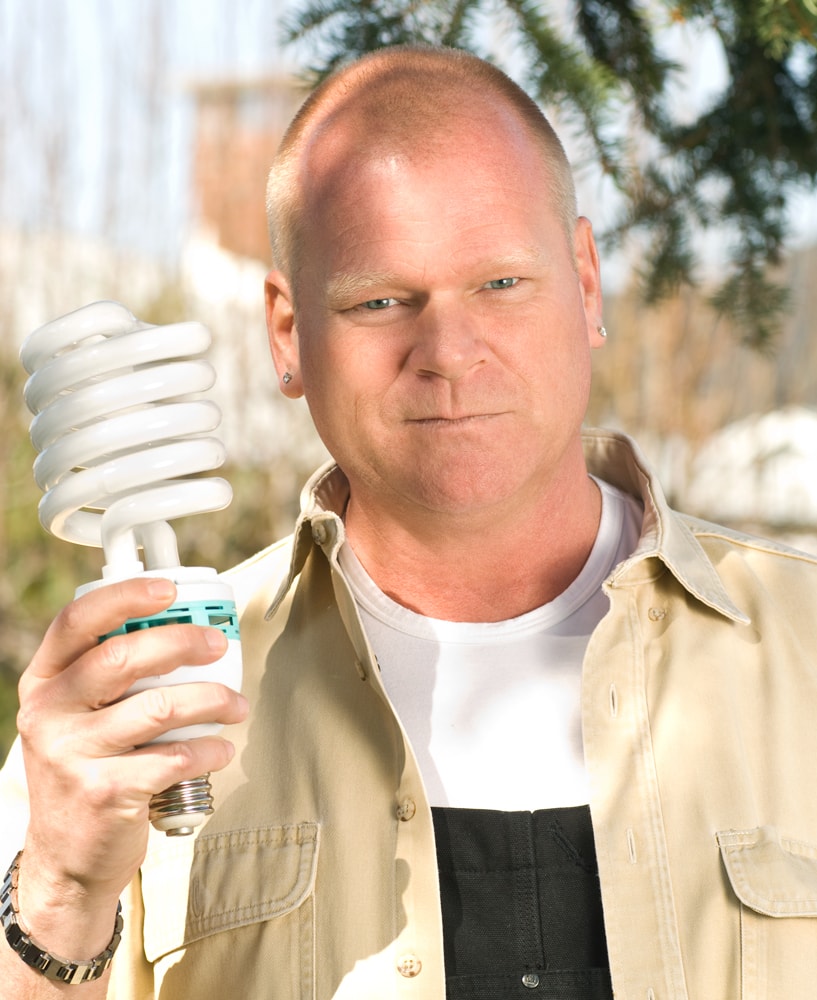
On average LEDs can last at least 22 years or 25,000 hours! CFLs only last about 8,000 to 10,000 hours and halogen bulbs last 2,500 to 5,000 hours, but they’re still a better choice than incandescent, which only last 1,000 hours.
Halogen light bulbs are very similar to incandescent, but they don’t last as long and are not as energy-efficient as CFLs and LEDs. Halogen lights produce a crisp white light great for task lighting. CFLs are cheaper than LEDs but are not as safe or as efficient as LEDs. When it’s cold, CFLs take time to warm up and are often too dim. Plus, most CFLs will not work on a dimmer.
Incandescent light provides a soft, warm yellowish light usually found in recessed or pot lights. Fluorescent lights have a long shelf life and use low energy and come in many different shades from warm to cool lighting. LEDs are good, as they last longer and are energy efficient.
LEDs can be used on dimmers and use about 20 percent less energy. You can also get LEDs for under cabinet lighting. LEDs may cost more, but it’s worth it. The money you save on energy (not having to buy more bulbs and benefits to the environment) doesn’t compare. When you switch to LEDs, you are helping the environment, your home, and your wallet.
To ensure you get a consistent light colour pick bulbs from the same family or brand. Warm-coloured light bulbs are great for creating ambiance and accent lighting, while cooler-coloured bulbs are usually brighter and better for task lighting. Also, think about the surfaces you are illuminating. For example, high gloss countertops will require a soft diffused light that will reduce the glare and dark or matte countertops will need brighter lights.
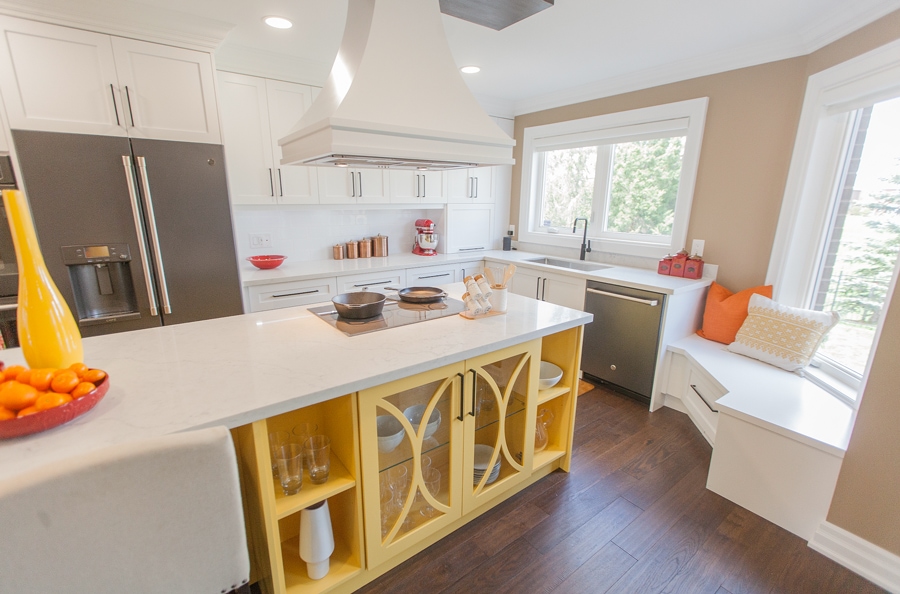
Photo from Holmes and Holmes Season 2.
Today, there are many lighting options to choose from for your kitchen. The best way to light your space is to use a combination of different lights. Different lighting sources will allow you to create a functional and aesthetically pleasing space that suits today’s busy kitchens.
READ NEXT:
